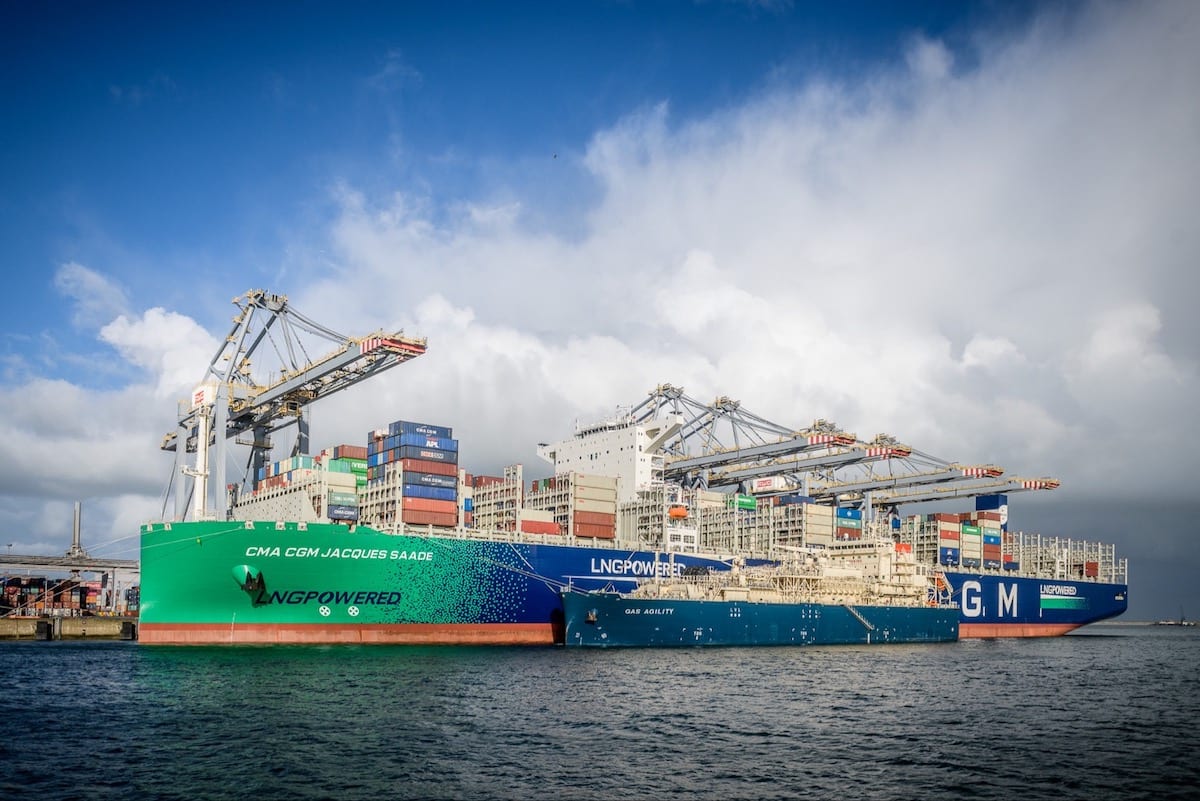Vessels wait on eastern Lake Superior while U.S. and Canadian Coast Guard ice breakers create tracks for the vessels to continue transiting April 7, 2015. U.S. Coast Guard Photo
Shipments of iron ore on the Great Lakes have gotten off to a horrendous start this year with icy conditions and a clear need for operational icebreakers to blame.
In March, just 800,000 tons of iron ore was shipped, the lowest level for the month since 2010, according to new figures released by the Lake Carriers’ Association. The March ore float was also nearly 60 percent below the month’s 5-year average.
The Lake Carriers’ Association represents 16 American companies that operate 56 U.S.-flag vessels on the Great Lakes.
Heavy ice and lack of icebreaking resources on both sides of the border were once again the culprits, according to the association.
“The winter of 2014/2015 was again brutal,” said James H.I. Weakley, President of Lake Carriers’ Association. “The ice formations were so formidable that a number of LCA’s members chose to delay getting underway rather than risk a repeat of last spring when ice caused more than $6 million in damage to the vessels. Compounding the problem is that both U.S. and Canadian icebreakers have experienced a number of mechanical issues. The MACKINAW, the U.S. Coast Guard’s most powerful icebreaker, is operating at less than full power. Other icebreakers have suffered casualties that have taken them out of service for various periods of time.”
Weakley noted that with foreign steel imports again reducing operating rates at American mills to perilous levels, it is even more critical that raw materials move as efficiently as possible. “Right now American steel mills need every competitive advantage they can get. A slow start to resupplying the mills after the winter closure is a worry the industry could do without. This is just another clear indication that the Lakes need, at a minimum, another heavy icebreaker to pair with the MACKINAW, and another 140-foot-long icebreaking tug to cover for the one that has been sent to the Coast Guard yard in Baltimore for service life extension.”
Weakley also called on Canada to review its icebreaking resources dedicated to the Lakes. The country used to have seven icebreakers stationed on the Lakes, but now just two are permanently assigned here.
Unlock Exclusive Insights Today!
Join the gCaptain Club for curated content, insider opinions, and vibrant community discussions.

 Join The Club
Join The Club













